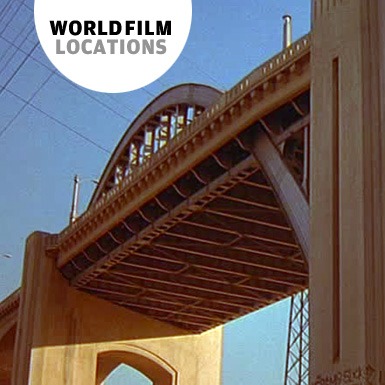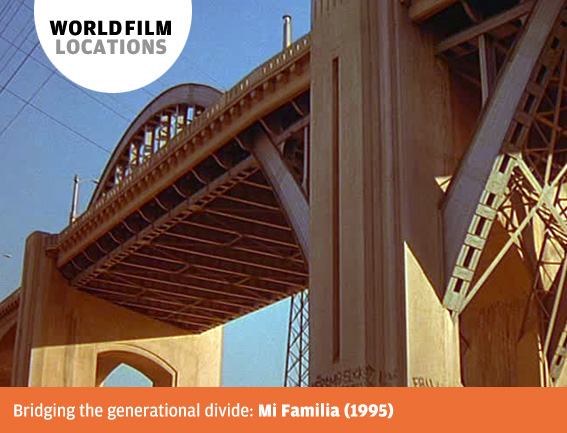Continuing our tie-in series of articles to celebrate the launch of the World Film Locations book series, Isis Sadek looks at how the many bridges that span the iconic Los Angeles river were used to evoke both a sense of generational connectivity and disharmony in Gregory Nava’s epic Mi Familia.
The bilingual multi-generational saga My family/Mi familia begins with a recollection: “Whenever I see the bridges that connect Los Angeles with East Los Angeles, I remember my family.” Paco (Edward James Olmos), the eldest of the six Sánchez siblings, narrates this Mexican-American family’s stories of joy, loss, grieving and togetherness across borders and bridges.
After his mother’s unjust deportation, Paco’s parents spent two years apart on each side of the US-Mexico border. The bridges spanning the Los Angeles River are equally significant for the family’s seven decade-long history.
Mostly designed by Merrill Butler, these monumental bridges were built between 1909 and 1938, to accommodate a growing population and, through their beauty, elevate Angelenos’ character, morale and civic virtues. Each of the fourteen historic bridges features distinctive railings, columns and light fixtures echoing successive architectural styles in vogue at the time.
With scores of men and women, Paco’s father crosses the Fourth Street Viaduct to “do the work of the city,” mowing lawns, taking care of children, cleaning homes, and working in restaurant kitchens. Later, outcast son Jimmy (Jimmy Smits) “joins the parade of workers”, excited at the prospect of becoming a father. Yet, as Paco adds, nobody from the West side ever crossed the bridges into the barrio. Decades later, lawyer son Memo, who prefers to be called “William,” crosses the bridge back from Bel Air to introduce the family to his future in-laws. Sánchez family members barely hide their excitement recounting the stories that we’ve just witnessed in front of an embarrassed Memo (Enrique Castillo) and baffled in-laws.


